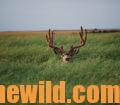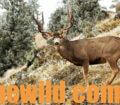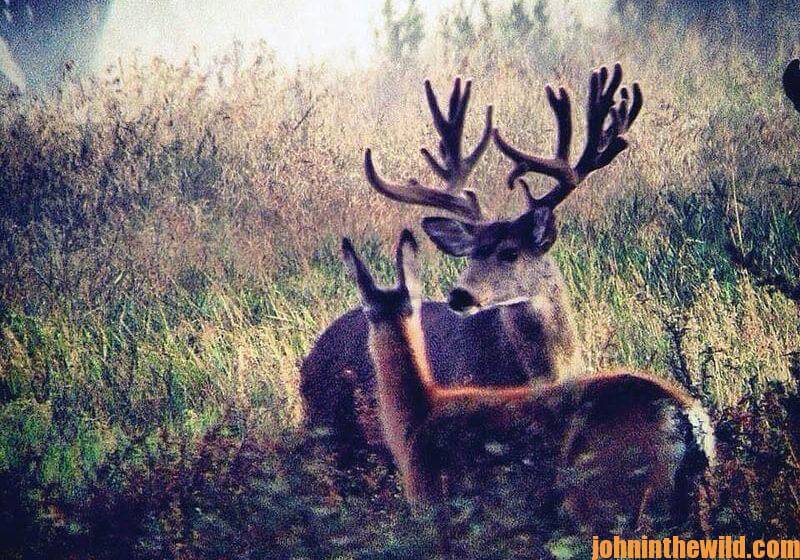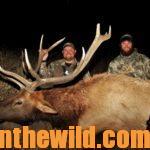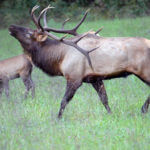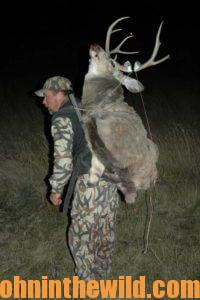 Editor’s Note: Cory Jarvis of Raymond, Alberta, Canada (www.3riversadventures.com, https://www.facebook.com/3riversadventures/), has been hunting mule deer for 30+ years and guiding mule deer hunters for the last 20 years. Mark Drury of Drury Outdoors (www.druryoutdoors.com ) and Eva Shockey are some of his enthusiastic clients.
Editor’s Note: Cory Jarvis of Raymond, Alberta, Canada (www.3riversadventures.com, https://www.facebook.com/3riversadventures/), has been hunting mule deer for 30+ years and guiding mule deer hunters for the last 20 years. Mark Drury of Drury Outdoors (www.druryoutdoors.com ) and Eva Shockey are some of his enthusiastic clients.
Each province of Canada has its own rules and regulations about how you can hunt, but in Alberta, where we hunt, a nonresident has to hunt with a guide when he’s hunting big game. You can hunt waterfowl without a guide, however if you’re deer hunting, a guide is required. One of the biggest advantages of having a guide is that most guides know the lay of the land and already have secured rights to hunt on several different properties on private lands. They also usually know the habits and haunts of the deer in that area, they know where the travel routes are, and they know where the deer feed and bed. I feel comfortable that I know where we should see and be able to take nice mule-deer bucks, but after over 20 years of guiding, I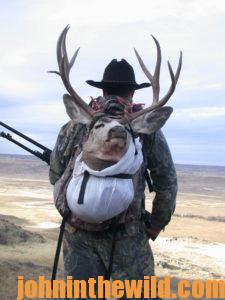 realize I don’t know everything. I learn something new every day I hunt and from every person with whom I hunt.
realize I don’t know everything. I learn something new every day I hunt and from every person with whom I hunt.
I know in the States, trail cameras are becoming more popular in helping hunters find and take whitetails. When we do hunt whitetails up here, we use them. However, they’re not very effective when we’re hunting mule-deer bucks. As open as our country is, the mule-deer bucks are quite visible. We’ll usually see several hundred mule deer per day.
Another advantage that a guide gives the hunter is because we look at so-many mule deer every day, we generally can better field judge the age of a buck, and what he’ll score before we try and stalk him. When my hunters come to camp, I have a variety of mule-deer antlers, so that the hunter can see what different antlers will score.
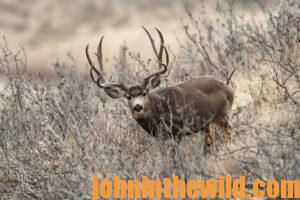
I’m often asked, “Can you get a deer tag in Alberta that’s good for taking either a whitetail or a mule deer?” The answer is no. You have to pick the particular species of deer you want to hunt. However, you can have a mule deer tag and a whitetail tag. Then you can take one of each species, if that’s what you want to do.
We do guide whitetail hunters here in Alberta. Our hunters generally take whitetails that will score 140 inches or better. The opportunity for a shot on a whitetail, especially during rifle season, is about 100%. We probably have about as many whitetails as a farmer raising corn has rats. We’ve taken quite a few whitetail bucks in the 160 class, and a few whitetail bucks in the 170 class.
You have to have two different types of licenses to hunt Alberta. One is called a WIN (Wildlife Identification Number) card (https://mywildalberta.ca/buy-licences/win-cards.aspx), and it costs $8. That tag is good for 5 years of hunting in Alberta. After you have your WIN card, you have to buy a Wildlife Certificate that usually costs about $80 for a nonresident. You have to have that Wildlife Certificate before you can buy any other license. Then you buy your deer tags from the outfitter. The deer tags usually cost about $350, plus the fee that the outfitter has to pay the province for the tag. Some of the licenses are specifically for archery season, however, if you buy a gun mule-deer license, that license is good for archery or firearms season.
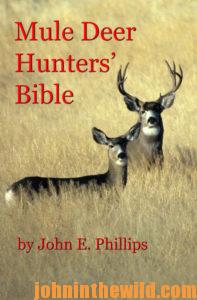 To learn more about mule deer hunting, check out John E. Phillips’ book – “Mule Deer Hunters’ Bible” available in Kindle, print and Audible at https://amzn.to/2Kg62w5
To learn more about mule deer hunting, check out John E. Phillips’ book – “Mule Deer Hunters’ Bible” available in Kindle, print and Audible at https://amzn.to/2Kg62w5
Tomorrow: What about Taking Guns to Canada to Hunt Mule Deer

